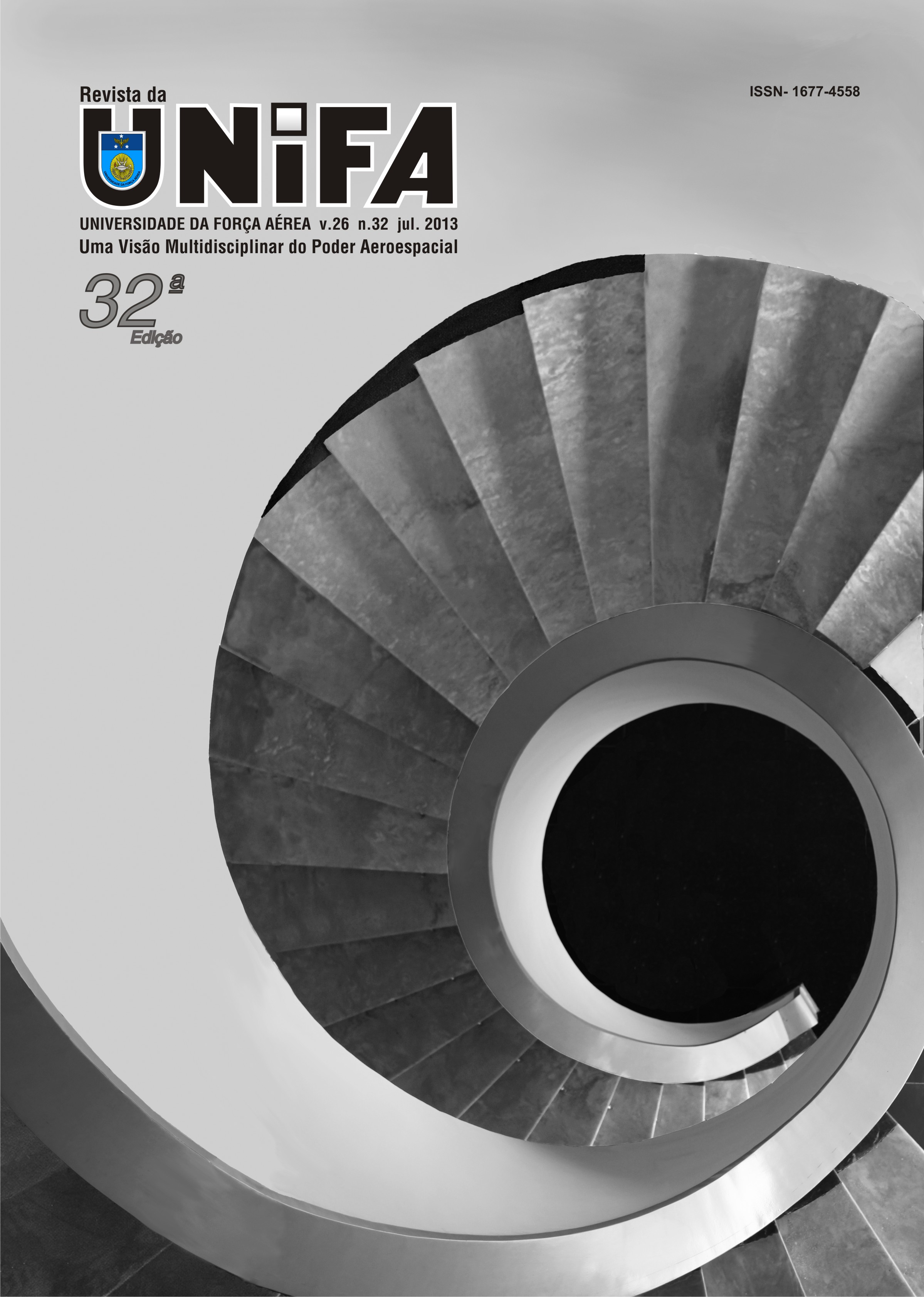Digital elevation model of R-99 aircraft
study about altimetry accuracy
DOI:
https://doi.org/10.22480/revunifa.2013.26.593Keywords:
Digital elevation model, SAR R-99, NSSDA, InterferometryAbstract
The Synthetic Aperture Radar of R-99 aircraft (SAR R-99) has many operations modes and the Interferometric SAR
(InSAR) is one of the most important. The main objective of InSAR is to generate a Digital Elevation Model (DEM)
that permits visualization of images in three dimensions and generation of topographic maps. It will be used in
the Cartography of Amazon Project, but there aren’t many studies about the accuracy of this data, specifically
about the altimetry. Thus, the aim of this study is to compare the altimetry of the DEM generated by the SAR R-99
with the DEM generated from a topographic map and classify it in accordance with the Cartographic Accuracy
Standard (Padrão de Exatidão Cartográfica - PEC) and the National Standard for Spatial Data Accuracy (NSSDA)
from the evaluation of the accuracy of altimetry. For the statistical analysis we selected samples in the topographic
DEM and its counterparts in the DEM of the SAR R-99, whose distribution and spacing followed the criteria of the
methodology of NSSDA. Considering the values of heights for both DEMs, we calculated the existing correlation,
and the result was sufficient to conclude that the DEM of SAR R-99 generated by InSAR mode fits the specifications
for Class “A” on the scale 1/100.000 in accordance with the PEC.
References
BRASIL. Decreto nº 89.817, de 20 de junho de 1984. Rio de Janeiro, 1984. Disponível em: . Acesso em: 5 mar. 2013.
CENTRO GESTOR E OPERACIONAL DO SISTEMA DE PROTEÇÃO DA AMAZÔNIA. Projeto Cartografia da Amazônia: documento de referência. Brasília, DF, 2008. 63 p.
FEDERAL GEOGRAPHIC DATA COMMITTEE. National Standard for Spatial Data Accuracy. FGDCSTD-007.3. Washington, DC, 1998. 28 p. Disponível em: <http://www.fgdc.gov/standards/projects/FGDCstandards-projects/accuracy/part3/chapter3/>. Acesso em: 4 mar. 2013.
HENDERSON, F. M.; LEWIS, A. J. Manual of remote sensing: principles and applications of imaging radar. 3. ed. New York, John Wiley & Sons, 1998. v. 2, 896 p.
INSTITUTO BRASILEIRO DE GEOGRAFIA E ESTATÍSTICA. Mapa índice digital - mapeamento geral do Brasil. Disponível em: <http://mapasinterativos.ibge.gov.br/sigibge/>. Acesso em: 4 mar. 2013.
LIN, Q.; VESECKY, J. F. Comparison of elevation derived from INSAR data with DEM over large relief terrain. International Journal of Remote Sensing, v.15, n. 9, p. 1775-1790, 1994.
MADSEN, S. N. Topographic mapping using radar interferometry: processing techniques. IEEE Transactions on Geoscience and Remote Sensing, [S.l.], v. 31, n. 1, p. 246-256, 1993.
MURA, J. C. Geocodificação automática de imagens de radar de abertura sintética interferométrico: sistema GeoInSAR. 2000. 160 p. Tese (Doutorado em Computação Aplicada) - Instituto Nacional de Pesquisas Espaciais
(INPE), São José dos Campos, 2000.
PINTO, M. B. P. Entendimento e Acurácia dos Modelos Digitais de Elevação Derivados de Dados do SAR Aerotransportado do SIPAM. 2007. 99 p. Dissertação (Mestrado em Geociências) - Universidade de Brasília, Brasília, 2007.
SEGUNDO ESQUADRÃO DO SEXTO GRUPO DE AVIAÇÃO. Manual do Operador do Radar de Abertura Sintética. Anápolis, 2008. 94 p.
ZALOTI JÚNIOR, O. D. Avaliação do Modelo Digital do Terreno extraído de dados SAR interferométricos na Banda X do SAR R-99B. 2007. 142 p. Dissertação (Mestrado em Sensoriamento Remoto) – Instituto de Pesquisas Espaciais (INPE), São José dos
Campos, 2007.
ZEBKER, H. A. et al. Accuracy of topographic maps derived from ERS-1 interferometric radar. IEEE Transactions on Geoscience and Remote Sensing, [S.l.], v. 32, n. 4, p. 823-836, 1994.
Downloads
Published
Issue
Section
License
Copyright (c) 2013 Breno Ricardo de Araújo Leite, Éden Jorge Machado Bezerra

This work is licensed under a Creative Commons Attribution-NonCommercial 4.0 International License.
Revista da UNIFA permite que o (s) autor (es) mantenha(m) seus direitos autorais sem restrições. Atribuição-NãoComercial 4.0 Internacional (CC BY-NC 4.0) - Revista da UNIFA é regida pela licença CC-BY-NC









